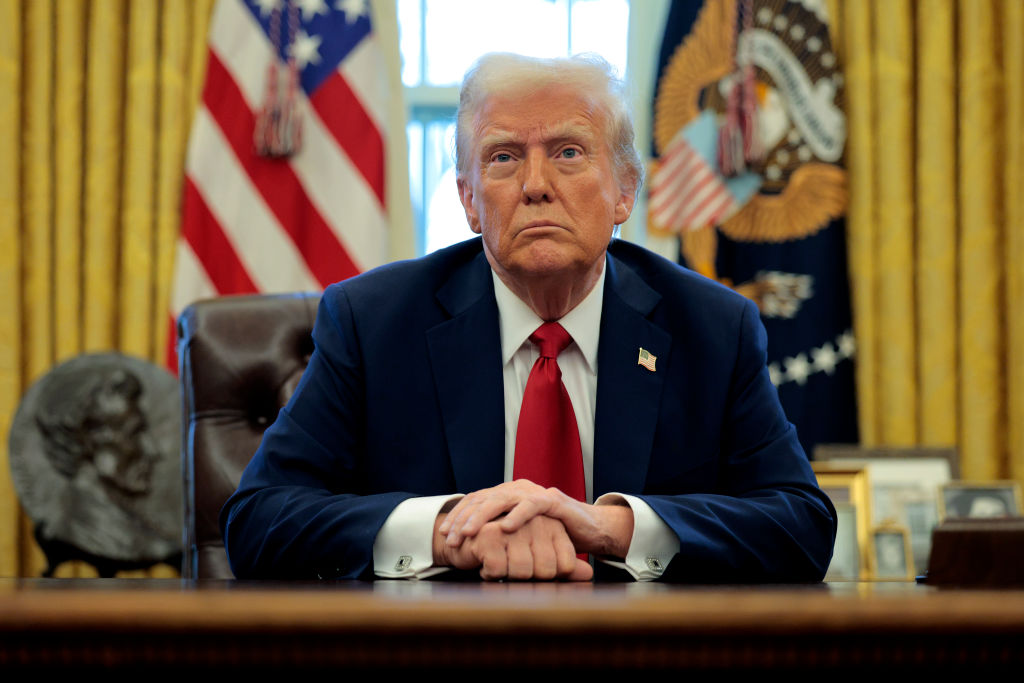
On February 1, U.S. President Donald Trump upended relations with his country’s three largest trading partners by imposing a steep 25% tariff on most imports from Mexico and Canada and a 10% levy on all imports from China.
In response, Canadian Prime Minister Justin Trudeau announced an identical 25% levy on $107 billion of American goods, and Mexico’s President Claudia Sheinbaum promised retaliation, but did not offer details on scope or targets. China also criticized the White House’s decision, saying it would file a lawsuit with the World Trade Organization and vowing additional countermeasures without providing details.
The new U.S. tariffs—announced as Marco Rubio began his first overseas trip as Secretary of State in Central America—will take effect on Tuesday. If they hold, they are expected to have wide-ranging effects on the USMCA, the global trade system, and the economies of the four countries involved.
AQ asked analysts to share their reactions and perspectives.

Ernesto Revilla
Managing director and head of Latin American economics at Citigroup
What many once deemed unthinkable came to pass. Trump followed through on his threat to impose 25% tariffs on Mexico and Canada to pressure them into reducing fentanyl trafficking and migration. The executive order includes an escalation clause, warning of increased rates if the countries retaliate. Although the tariffs were announced under the International Emergency Economic Powers Act (IEEPA), if made permanent, they would effectively dismantle the USMCA.
This is the most significant threat to North American trade integration since the Smoot-Hawley Tariff Act of 1930. There is broad agreement by analysts that, if made permanent, the tariffs would reduce GDP and increase inflation in the three countries, with Mexico the most vulnerable. This self-inflicted cost to the U.S. economy, plus the fact that alienating crucial allies in a time of geopolitical upheaval seems obtuse, made the market complacent in the belief that tariffs were a negotiating tactic and not a credible outcome. Indeed, the Mexican peso barely budged when the White House press secretary confirmed days ago that this would happen on February 1. It may still be the case that the ante has been raised and that Trump is pushing a negotiation to the limit. Still, the retaliation announced by Canada and Mexico suggests that observers should prepare for more complicated scenarios.
The main uncertainty remains whether these tariffs will be short-lived. If they are not implemented on Tuesday, February 4, at 12:01 a.m. ET, which could still be the case, the impact might be similar to the threat of repealing NAFTA in 2016: short-term volatility without significant long-term damage. If implemented for a few months (say, the first half of 2025), Mexico would go into a recession, with growth closer to zero in 2025.
If the tariffs become permanent, we can anticipate a recession in Mexico and Canada, along with substantial challenges for U.S. growth. Higher inflation would impact all three countries, although these effects would be more pronounced in the Mexican economy.
In Mexico, a depreciation of the peso—around 10-20%, with a significant risk of overshooting—would mitigate some of the tariff impact on exports in the short term, though it would complicate the nation’s central bank easing cycle. FX intervention would be on the table. Mexico’s risk, as measured by Credit Default Swaps (CDS), would increase, and there would be an added risk to the country’s investment grade rating. In the long term, lower investment in supply chains, manufacturing, and nearshoring would all contribute to lower potential growth, particularly if domestic institutional reforms continue inhibiting investor confidence. A less robust Mexican economy with higher unemployment would only add to the pressure of migration toward the U.S. and a worsening of organized crime—coupled with the irony that a weaker peso due to the tariffs makes non-tariffed goods such as fentanyl cheaper for the U.S. consumer.
There is still time to de-escalate a damaging trade war. A stronger North America—and a more stable Mexico—should still firmly align with U.S. interests, particularly as Mexico and Canada have demonstrated ample willingness to support the U.S. in its priorities.

Heidi Jane Smith
Research professor of economics at Universidad Iberoamericana, Mexico City
President Trump’s tariff decisions are driven largely by domestic fiscal constraints as he submits his FY 2025 budget to Congress. With a $1.8 trillion deficit in FY 2024 and $36.1 trillion in national debt, the administration is seeking new revenue sources while maintaining Trump’s 2017 tax cuts. Tariffs offer a politically expedient solution, but they come with severe economic risks, including higher consumer prices, disrupted supply chains, and declining business investment. The national debt for everyone living in the U.S. is about $100,000 per person.
Tariffs will directly impact key industries: automotive ($228 billion trade flow), energy ($165 billion), agriculture ($98 billion), electronics ($181 billion), and logistics ($1.4 trillion). Just as during the pandemic, the cost of goods will rise. This will affect manufacturers reliant on North American supply chains, leading to job losses, lower productivity, and reduced GDP growth. Rising inflation could further weaken consumer confidence, slowing economic recovery and increasing recession risks.
Meanwhile, Mexican President Sheinbaum and Canadian Prime Minister Trudeau are ready to retaliate, which could escalate into a full-scale trade war and potentially undermine and end the USMCA. On Sunday, Democrats announced they are aligning with Mexico and Canada to pressure Trump into reconsidering, fearing the global economic consequences of supply chain instability and market uncertainty.
A resolution may come from USMCA dispute mechanisms or U.S. industry pushback against rising costs. If unresolved, three scenarios emerge: (1) sector-specific exemptions, (2) prolonged trade war with retaliatory tariffs, or (3) political backlash as inflation impacts voters. With Trump needing congressional approval for his budget, the tariffs could spark legal battles over executive fiscal authority, testing the limits of presidential power in economic policymaking.
Another avenue for a resolution runs through the debate about the president’s rights. The Congressional Budget and Impoundment Control Act of 1974 limits the president’s power to unilaterally withhold congressionally-approved spending. Trump’s attempt to bypass these restrictions could provoke constitutional disputes and legislative gridlock, risking a government shutdown. Markets are already reacting to U.S. fiscal instability, with concerns of another credit rating downgrade, as seen in 2023 when Fitch lowered U.S. debt from AAA to AA+.

Diego Marroquín Bitar
Inaugural Bersin-Foster North America Scholar at the Woodrow Wilson Center
President Trump’s tariffs are a crippling blow to USMCA. He has followed through on his campaign promise, invoking the International Emergency Economic Powers Act (IEEPA) to impose 25% tariffs on Mexico and Canada, dealing a major blow to North American manufacturing, agribusiness, consumers, investment, and regional innovation. The action represents a flagrant violation of the U.S.-Mexico-Canada trade agreement (USMCA), negotiated under Trump himself, and a seismic shift in U.S. trade policy that will have long-lasting consequences. With USMCA up for review next year, how can Canada and Mexico trust any future commitments from the U.S.?
Trade is North America’s economic backbone—nearly 80% of Mexico’s GDP and 70% of Canada’s depends on it. USMCA sustains the livelihoods of 9 million Mexicans (14% of the workforce), over 5 million U.S. workers, and 4 million Canadians and their families. If these tariffs aren’t reversed immediately, countless cross-border businesses will collapse as their profit margins disappear.
Who benefits from this 180-degree shift away from 30 years of closer economic integration? Not U.S. consumers, who will face higher prices and inflation. The real winners? China and Russia stand to gain from a fractured, less competitive North America. These tariffs don’t just disrupt trade—they cripple USMCA at a critical moment.
That said, I remain cautiously optimistic. North America’s deeply integrated supply chains and cross-border infrastructure won’t vanish overnight. Depending on how Canada and Mexico respond, this could be a temporary setback rather than the end of the North American economic integration project.
For better or worse, the threat of tariffs has rekindled Mexico-Canada cooperation and mobilized key stakeholders in the U.S. to defend the hard-fought gains of regional trade and investment. As the economic pain sets in and Mexico and Canada coordinate their response, pressure will mount, and more voices will inevitably demand a correction. As Duncan Wood often says, perhaps once the economic consequences become undeniable, the three governments, alongside the private sector and civil society, will rally to defend USMCA, reaffirming their commitment to North America. Time heals wounds, almost no matter how deep.

Antonio Ortiz-Mena
CEO of AOM Advisors, Chair of the Mexican Foreign Trade Council (COMCE)’s USMCA Committee, and adjunct professor at Georgetown University
The tariffs approved by President Trump ostensibly aim to pressure Canada and Mexico into further curbing undocumented migration and fentanyl trafficking to the U.S. However, these actions risk violating the USMCA, potentially exacerbating the challenges of migration and fentanyl trafficking. They also weaken the economies of all three North American countries, harming workers and consumers throughout the region. Furthermore, these orders raise concerns about the U.S.’s reliability and trustworthiness as a partner, especially amidst global instability and the complexities of U.S.-China competition.
Canada and Mexico have long sought to maintain separate discussion channels for security, migration, and trade, understanding that challenges in one area can negatively impact cooperation in others. The Mexican government has recognized that undocumented migration and fentanyl trafficking present shared challenges that require joint action and has expressed a willingness to continue collaborating with the U.S. on these issues. This cooperation—the smart and right choice—serves Mexico’s interests and will likely persist despite the tariffs, not because of them.
However, the tariffs create additional challenges. For example, restricting Mexican tomato exports to the U.S. could jeopardize the livelihoods of half a million Mexicans, potentially driving them to join drug trafficking organizations or migrate to the U.S., regardless of border enforcement efforts. Mexican retaliation could harm U.S. farmers and ranchers, for whom the Mexican market is a primary export destination. Disrupting regional production chains, especially in the automotive sector, would diminish North America’s global market share when competition from China intensifies.
Ultimately, the most significant consequences of these decrees may be geopolitical, not simply economic. For those of us who have for decades advocated for close trade and security ties with the U.S., admire its democracy and dynamic economy, and regard it as an ideal and trustworthy partner, it will be increasingly difficult to counter critics who have long been wary of the U.S. and who could advocate for closer relations with other global powers.





